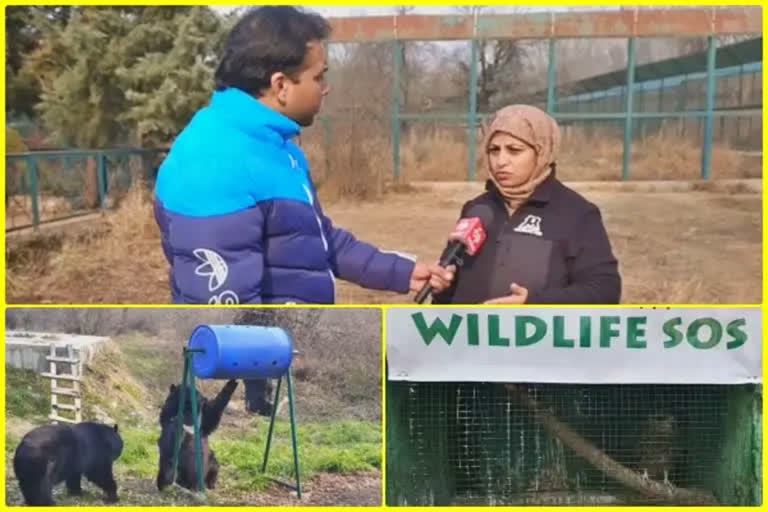Srinagar (Jammu and Kashmir): The coexistence between humans and wildlife has turned into a conflict with the passing of time and one major cause of human–wildlife conflict is the increasing human population. Gradual human encroachment has taken over the land, which has put the wildlife settlements in direct contact with the forest area. It is difficult to distinguish the thin line that exists between the forest and human habitations.
As the human population increases and the demand for resources grows, the intensity of such conflicts increases. As a result, the population of those species which are unable to adapt to altered habitats may invade the marginal habitats. Talking to ETV Bharat, Alia Mir, in charge of Wildlife SOS said, "These wild animals have been brought from different habitats where they were facing human-wildlife conflict. They were rescued from that situation and brought here to the rehabilitation centre.
Mir said, "The leopard and the bears have been brought here after conducting rescue operations from human settlements in different parts of Kashmir. The more cases of attack on humans are getting highlighted due to the active role of the media." Describing human-wildlife conflict, Mir said, "Conflict occurs when the needs and behaviour of wildlife impact negatively on humans or when humans negatively affect the needs of wildlife."
Mir further said, "These animals were brought here for their safety as well as the security of humans. Here we have followed all the guidelines provided by the Central Zoo Authority (CZA) to make sure they get adequate space and food. We have three female bears and two male bears in the rehabilitation centre. All these wildlife animals are fed according to a special diet chart. An injured eagle was also rescued and brought to the rehabilitation centre."
Also read: MP: Another tiger, hyena die at Panna Reserve a month after tiger found dead by hanging
Human-wildlife conflict, caused by competition for natural resources between humans and wildlife has caused wild animals to kill or injure people and domestic animals. Several cases are reported of wild animals harming humans. This has become an obstacle for the rehabilitation centre at Dachigam National Park to set the wild animals free.
Dr Umar, in charge Wildlife Health Centre, said, "All the animals are thoroughly checked before releasing them into the wild. They are provided with proper treatment here. We follow the protocols provided by CZA and if any animal is severely injured, we retain it for further treatment." Wildlife SOS has rescued dozens of wild animals. These animals were brought to the rehabilitation centre here, but now there is no habitat for the wild animal to be set free.



